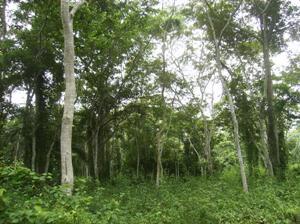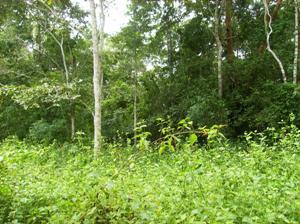Romain Lucas Glele Kakai
The aims of the study are to estimate the current density of A. africana; to assess, rank and describe the main threats on the species and to sensitize schoolchildren on the species conservation.

A. africana is an important multipurpose tree threatened in forests. In West Africa, it is common to observe old trees of A. africana in savannas, woodlands or forest vegetation; however, its regenerations could rarely been observed. More, A. africana has been classified as an endangered species in the red list of IUCN. In addition to all this, experimental field data gave in some areas weak outputs. It is then important to find out if this species is experiencing an extinction event and also the main threats on the species. Hence, long lasting conservation actions are needed. The major activities planed for that purpose are listed below:

Forest inventory: Will be conducted in Lama Forest (Guineo-congolean zone, South-Benin) and Oueme Superieur (Sudanian zone, North-Benin). In each forest, 100 plots of 0.15 ha will be randomly established. Each plot will be associated with four quadrats located at the tops of the plot. The number of A. africana trees will be noted. The regeneration will be counted in quadrats. Marked threats will also be recorded.
Survey study: 100 people will be selected according to socio-ethnic groups and their proximity to the forests. The threats on the species will be listed and added to other threats noted in forest. People will be asked to rank the listed threats according to their importance. The project will also help providing options for alternative livelihoods.
Educational actions: 5 schools will be selected in each zone according to their proximity to the forests. We will increase schoolchildren awareness on: the importance of A. africana for human being, the main threats it is facing and the scarcity of its regeneration. Emphasis will be put on the necessity to conserve the species by avoiding or reducing the main threats and favour assisted regeneration, plantation of seedlings in the playground of schools as well as the neighbouring villages.
The project will provide the forestry department, the scientists and Non-Governmental Organizations (NGOs), with some missing key information to help them with some of their field activities, and also provide technical information for a better use of the species.